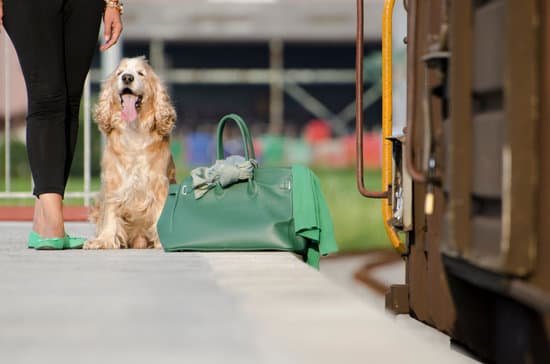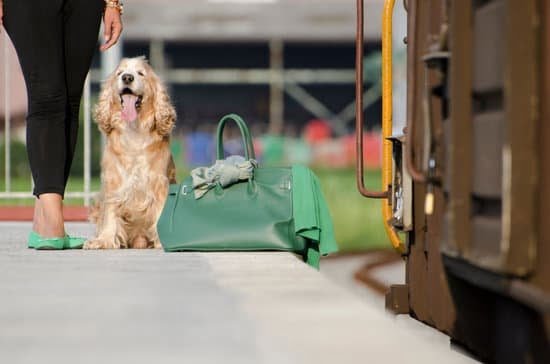Training is essential for any dog, regardless of age. However, when it comes to a 2-year-old dog, training becomes even more important. At this stage, your dog is starting to establish their behaviors and habits as they transition from puppyhood to adulthood. By training your 2-year-old dog to listen, you can shape their behavior and create a well-mannered and obedient companion.
One of the main reasons why training is crucial for a 2-year-old dog is because it helps establish boundaries and expectations. As dogs mature, they may start testing limits and asserting their independence. Without proper training, this can lead to disobedience and behavioral problems. Training provides structure and consistency in your dog’s life, helping them understand what is expected of them.
Another reason why training is important for a 2-year-old dog is that it strengthens the bond between you and your furry friend. Through positive reinforcement techniques, you can establish trust and respect with your dog. This creates a foundation for effective communication and encourages your dog to listen to your commands.
Overall, understanding the importance of training for a 2-year-old dog sets the stage for success in creating a well-behaved pet. In the following sections, we will explore various aspects of training specifically tailored for a 2-year-old dog, including assessing their current level of training, setting goals, implementing techniques, addressing challenges, enhancing communication through positive reinforcement methods, and keeping training interactive with games and activities.
Let’s embark on this journey together in shaping your 2-year-old furry friend into an attentive listener.
Assessing the Current Training Level of Your 2 Year Old Dog
Before you can begin training your 2-year-old dog, it is important to assess their current training level. This will help you understand where they are at in terms of obedience and behavior, and identify areas that need improvement. Here are some steps you can take to assess your dog’s training level:
- Evaluate basic obedience commands: Start by testing your dog’s understanding and response to basic obedience commands such as sit, stay, come, and heel. Pay attention to how well they follow these commands and if they respond consistently.
- Observe their behavior in different situations: Take note of how your dog behaves in different environments and situations. Do they get easily distracted or show signs of anxiety or aggression? Assessing their behavior in various scenarios will give you a better idea of what challenges may arise during training.
- Assess their leash walking skills: Take your dog for a walk on a leash and observe their behavior. Do they pull excessively or walk calmly beside you? Look for any signs of leash aggression or reactivity towards other dogs or people.
Once you have assessed your dog’s current training level, you will have a clearer picture of what areas need improvement and where to focus your training efforts. It is important to remember that every dog is unique, so be patient and tailor your approach to their individual needs.
Here are some resources that may be helpful when assessing the current training level of your 2-year-old dog
- YouTube tutorials on evaluating a dog’s obedience skills.
- Professional dog trainers who offer assessment services.
- Online forums and communities dedicated to dog training where you can seek advice from experienced trainers.
- Books and guides on canine behavior assessment techniques.
Remember, assessing your dog’s current training level is just the first step towards successfully training them. With dedication, consistency, and positive reinforcement techniques, you can help your 2-year-old dog become a well-behaved and obedient companion.
Setting Clear and Realistic Training Goals for Your 2 Year Old Dog
Setting clear and realistic training goals for your 2-year-old dog is essential in order to have a successful training experience. Having specific goals will give you and your dog a sense of direction, focus, and purpose during the training process. Here are some steps you can take to set clear and realistic training goals for your 2-year-old dog:
- Assess Your Dog’s Abilities: Before setting any goals, it’s important to assess your dog’s current abilities and behavior. Take note of what commands or behaviors they already know and what areas need improvement. This will help you determine what goals are achievable based on their current skill level.
- Prioritize Training Goals: Once you have assessed your dog’s abilities, it’s time to prioritize which areas need the most attention. Consider what commands or behaviors are most important for their safety, well-being, and overall obedience. Start with a few key goals that are achievable within a reasonable timeframe.
- Set SMART Goals: When setting training goals for your 2-year-old dog, make sure they are Specific, Measurable, Achievable, Relevant, and Time-bound (SMART). For example, instead of stating a vague goal like “improve leash manners,” be specific by saying “walk calmly on a loose leash without pulling for 10 minutes.”
To keep track of your goals and measure progress along the way, create a list or chart with each goal listed alongside the corresponding timeframe in which you aim to achieve it. Celebrate small victories as you reach each milestone to keep both yourself and your dog motivated.
Remember that all dogs learn at different paces, so it’s important to be patient with your 2-year-old dog as they learn new behaviors. Stay consistent in your training efforts and adapt as needed along the way.
By setting clear and realistic training goals for your 2-year-old dog, you will have a roadmap to follow during the training process. This will enable you to focus your efforts, track progress, and ultimately achieve a well-trained and obedient dog.
Establishing a Positive and Trusting Relationship with Your 2 Year Old Dog
When it comes to training a 2-year-old dog to listen, it is crucial to establish a positive and trusting relationship with your furry friend. This section will guide you on how to build a strong bond and create a safe environment for effective training sessions.
Building Trust Through Bonding Activities
Building trust should be the foundation of your relationship with your 2-year-old dog. Spend quality time together engaging in bonding activities such as grooming, playing, or even going for walks in new environments. These activities help your dog associate positive experiences and emotions with being around you. By consistently providing care, attention, and affection, you will create an environment where your dog feels secure and loved.
Effective Communication Techniques
Communication is key when establishing a positive relationship with your 2-year-old dog. Dogs rely heavily on body language and vocal cues to understand their humans. Use clear and consistent commands during training sessions to help them understand what is expected of them. Additionally, pay attention to your own body language as dogs are incredibly perceptive animals. Maintaining an open posture, making eye contact, and using gentle tones can convey trustworthiness and reassurance.
Furthermore, it is important to listen to your dog as well. Pay attention to their signals and respond accordingly. Understanding their needs and preferences allows you to address any issues that may arise during training effectively.
Promoting Positive Associations
Positive reinforcement techniques play a critical role in fostering trust between you and your 2-year-old dog. Rewarding desired behaviors instead of punishing unwanted ones helps establish a more harmonious relationship. Use treats, praise, or toys as rewards when they successfully follow commands or display good behavior. Consistently rewarding these positive actions encourages your dog to repeat them in the future.
By focusing on building trust, effective communication, and promoting positive associations, you can establish a solid foundation for successful training sessions with your 2-year-old dog. Remember, patience and consistency are key in creating a positive and trusting relationship that will lead to better listening skills over time.
Basic Obedience Training Techniques for a 2 Year Old Dog
Basic obedience training is an essential component of training a 2-year-old dog to listen. By teaching them basic commands and behaviors, you can establish a foundation of communication and control with your furry friend. In this section, we will explore some effective techniques for basic obedience training that can help your 2-year-old dog become more attentive and responsive.
Start with the Basics
When it comes to basic obedience training, it is important to start with the fundamental commands such as sit, stay, down, come, and heel. Begin by teaching one command at a time in a distraction-free environment. Use positive reinforcement techniques such as treats or praise to motivate your dog to perform the desired behavior. Be patient and consistent in your training sessions, gradually increasing the level of difficulty as your dog becomes more proficient in responding to the commands.
Use Positive Reinforcement
Positive reinforcement is an effective method for encouraging good behavior in dogs. Rewarding your 2-year-old dog with treats, verbal praise, or playtime whenever they successfully follow a command will reinforce their understanding of what you expect from them. It is essential to provide instant rewards so that your dog associates the behavior with the positive outcome. Avoid using punishment or harsh techniques as they can damage the trust and relationship you have built with your furry companion.
Incorporate Training into Daily Routine
Consistency is key when it comes to training a 2-year-old dog. Make sure to incorporate short training sessions into your daily routine to reinforce their learning and keep their skills sharp. Choose specific times during the day when both you and your dog are relaxed and focused on training without distractions. Additionally, integrating obedience commands into everyday activities like mealtime or going for walks can reinforce their understanding and improve their responsiveness outside of formal training sessions.
By implementing these basic obedience training techniques, you can lay a strong foundation for your 2-year-old dog to become a well-behaved and attentive companion. Remember to be patient, consistent, and use positive reinforcement to create a positive learning environment for your furry friend. With time, practice, and dedication, your dog will become more receptive and eager to listen to your commands.
Implementing Consistency and Structure in Training Your 2 Year Old Dog
Consistency and structure are crucial when it comes to training a 2 year old dog. Dogs thrive on routine and clear expectations, so establishing consistency in your training methods and daily routines will greatly enhance their learning process. Additionally, providing a structured environment helps dogs feel safe and secure, which can contribute to their overall obedience and willingness to cooperate.
One important aspect of consistency is using the same commands and cues consistently throughout your training sessions. Dogs learn through repetition, so using consistent verbal or hand signals will help them understand what you expect from them. It’s also essential to be consistent in your responses to their behaviors. For example, if you want your dog to stay off the furniture, make sure everyone in the household enforces this rule consistently.
Another vital element in implementing consistency is sticking to a regular schedule for feeding, exercise, potty breaks, and training sessions. Dogs thrive on predictability, so having a set routine will help them understand when certain activities are expected of them. This will also prevent confusion or frustration on their part.
To ensure an effective training experience for your 2 year old dog, structure should be incorporated into their daily life as well. Establish designated areas for eating, sleeping, playing, and taking care of their bathroom needs. By providing these designated spaces, it becomes easier for them to understand where they should engage in specific behaviors.
Implementing consistency and structure may require some patience initially as you establish new routines and reinforce desired behaviors. However, by maintaining this approach over time, you will create a stable foundation for successful training that will benefit both you and your dog.
| Consistency | Structure |
|---|---|
| Using consistent commands and cues | Establishing designated areas for different activities |
| Being consistent in responses to behaviors | Maintaining a regular schedule for feeding, exercise, potty breaks, and training sessions |
Addressing Common Challenges and Obstacles in Training a 2 Year Old Dog
One of the biggest challenges in training a 2 year old dog is overcoming distractions. At this age, dogs are easily distracted by their surroundings and can have difficulty focusing on commands or instructions. It is important to address this challenge by gradually increasing the level of distractions during training sessions.
To help your dog overcome distractions, start by conducting training sessions in a quiet and familiar environment. Once your dog becomes comfortable with basic commands in this setting, slowly introduce mild distractions such as toys or treats nearby. Gradually increase the level of distractions as your dog progresses, ensuring that they are still able to successfully follow commands.
Another common challenge when training a 2 year old dog is overcoming stubbornness or willfulness. At this age, dogs may assert their independence and test boundaries. It is important to address this challenge by establishing yourself as the leader and using positive reinforcement techniques.
Setting clear boundaries and consistent rules will help convey to your dog what behaviors are acceptable and which ones are not. Additionally, using positive reinforcement such as treats, praise, and rewards will encourage your dog to engage in desired behaviors.
| Challenge | Solution |
|---|---|
| Distractions | Gradually increase level of distractions during training sessions. |
| Stubbornness/Independence | Establish clear rules and boundaries, use positive reinforcement techniques. |
Lastly, consistency can be a major obstacle when training a 2 year old dog. Dogs thrive on routine and repetition, so it is important to establish a consistent training schedule and stick to it. Training should be done daily at around the same time for optimal results.
In addition to consistency with timing, it is also essential to be consistent with the commands and cues you use. Use clear and concise language, and ensure that everyone in the household is using the same commands to avoid confusion for the dog.
By addressing these common challenges and obstacles, you can effectively train your 2 year old dog to listen and respond to commands. With patience, consistency, and positive reinforcement techniques, you can form a strong bond with your furry friend while teaching them important obedience skills.
Enhancing the Bond and Communication with Your 2 Year Old Dog through Positive Reinforcement Techniques
One of the most important aspects of training a 2-year-old dog is building a strong bond and effective communication. Positive reinforcement techniques are an excellent way to enhance this bond and establish clear lines of communication with your furry friend.
Positive reinforcement involves rewarding your dog for desired behaviors, encouraging them to repeat those behaviors in the future. This can be done through treats, praise, or playtime. The key is to make sure that the rewards are something that your dog finds highly motivating.
When using positive reinforcement, timing is crucial. The reward should be given immediately after your dog performs the desired behavior, so they can clearly associate it with the positive outcome. Whether you are teaching basic obedience commands or addressing unwanted behaviors, consistency and patience are essential.
In addition to rewarding desirable behaviors, it’s equally important to avoid punishment or scolding when your dog makes mistakes. Negative experiences can damage the trust and bond between you and your dog. Instead, redirect their attention to an appropriate behavior and reward them when they comply. By focusing on positive reinforcement techniques, you will create a happy and cooperative training environment for your 2-year-old dog while reinforcing your bond and strengthening your communication skills together.
Enriching the Training Experience for Your 2 Year Old Dog with Interactive Games and Activities
In addition to basic obedience training techniques, incorporating interactive games and activities can greatly enhance the training experience for your 2 year old dog. These games not only provide mental stimulation but also help build a stronger bond between you and your furry friend.
One popular game is hide and seek. Start by having your dog sit or stay in one area while you go hide somewhere else in the house or yard. Once you are hidden, call your dog’s name and encourage them to find you. This game not only reinforces their recall command but also encourages them to use their problem-solving skills as they search for you.
Another great activity is puzzle toys. These toys usually have compartments or hidden treats that require your dog to figure out how to access them. Not only do they keep your dog engaged, but they also help improve their cognitive abilities and keep their minds sharp.
Additionally, agility courses can be a fun way to train and exercise your 2 year old dog. Set up obstacles such as jumps, tunnels, and weave poles in your backyard or at a local park. Guide your dog through the course using positive reinforcement, rewarding them with treats or praise when they successfully navigate each obstacle. This not only helps strengthen their physical abilities but also builds their confidence and focus.
By incorporating interactive games and activities into your training sessions, you not only make the process more enjoyable for both you and your 2 year old dog but also ensure that they receive the mental stimulation necessary for their overall well-being. Remember to always keep the activities fun, positive, and reward-based to continue strengthening the bond between you and your furry companion while achieving successful training results.
Frequently Asked Questions
How do I get my 2 year old dog to listen?
Getting a 2 year old dog to listen requires consistency, patience, and positive reinforcement. Start by establishing clear rules and boundaries for your dog, and ensure that everyone in the household enforces them consistently. Use positive reinforcement techniques such as rewards, treats, or praise whenever your dog listens or follows commands correctly.
Regular training sessions are essential to reinforce obedience and build a stronger bond with your dog. It’s important to remember that dogs respond best to positive reinforcement rather than punishment or negative tactics.
Is a 2 year old dog still trainable?
Yes, a 2 year old dog is still trainable. Dogs can continue to learn and be trained throughout their lives, regardless of their age. While it may require some extra time and effort compared to training a younger puppy, a two-year-old dog has the ability to learn new commands and behaviors with proper training techniques.
Consistency, repetition, and patience are key when working with an older dog. Professional trainers can also help assess your dog’s individual needs and provide guidance on effective training methods tailored specifically for older dogs.
Why is my 2 year old dog not listening?
There could be several reasons why your 2 year old dog is not listening. One possible reason might be inadequate or inconsistent training in the past. Dogs need clear instructions and consistent reinforcement to understand what is expected of them. Another reason could be distractions in the environment that are diverting your dog’s attention away from you or the commands you’re giving.
In these cases, it may help to practice training sessions in a quiet and controlled environment before gradually introducing distractions. Additionally, physical discomfort or health issues could also impact your dog’s ability to focus or listen. If you’ve ruled out other potential causes, it may be beneficial to consult with a veterinarian who can evaluate if any underlying health issues could contribute to your dog’s lack of attentiveness or responsiveness during training sessions.

Welcome to the blog! I am a professional dog trainer and have been working with dogs for many years. In this blog, I will be discussing various topics related to dog training, including tips, tricks, and advice. I hope you find this information helpful and informative. Thanks for reading!





